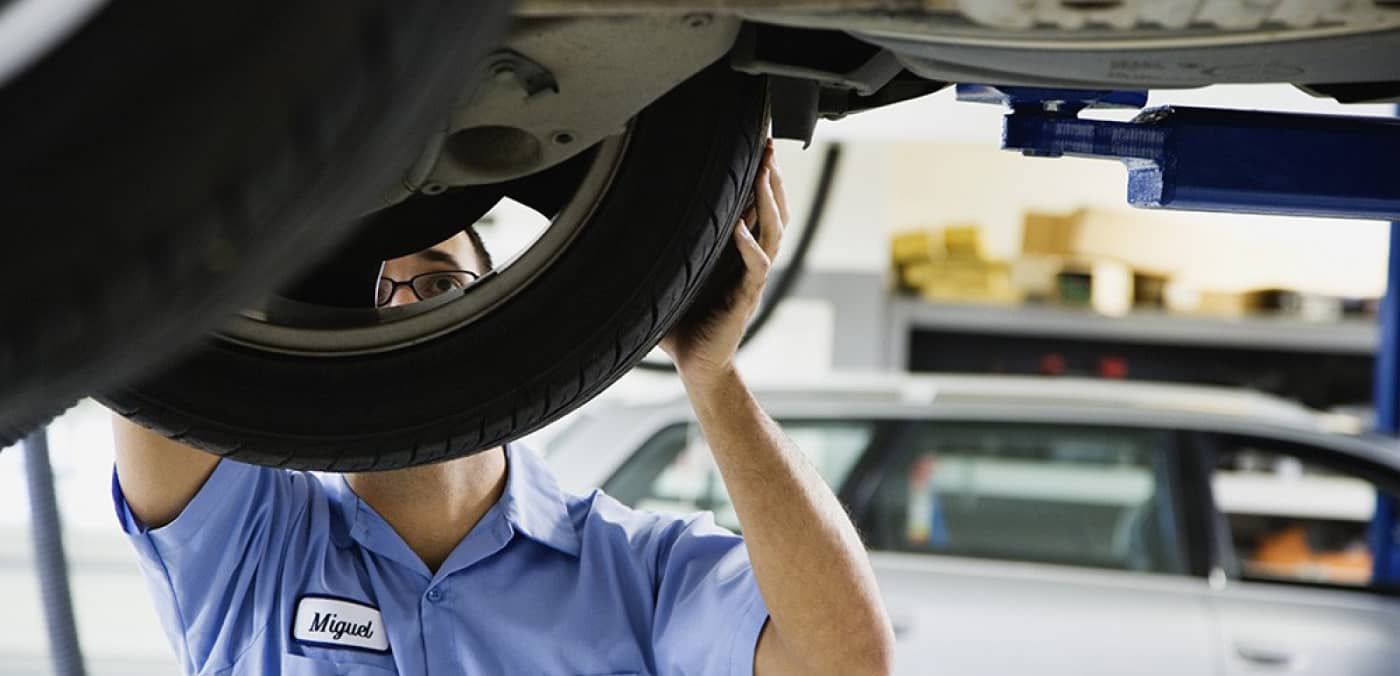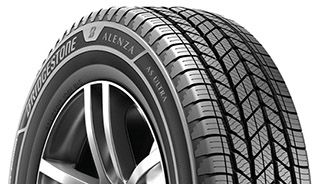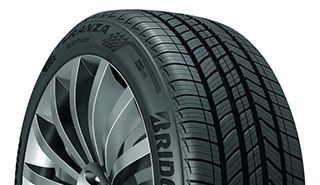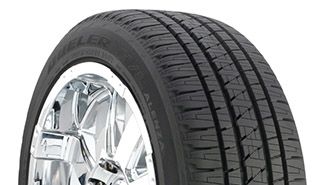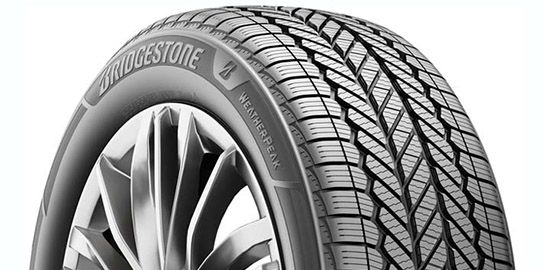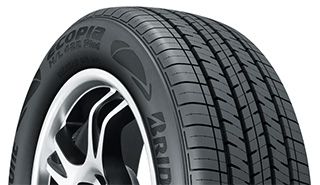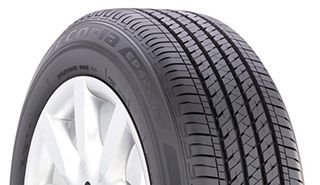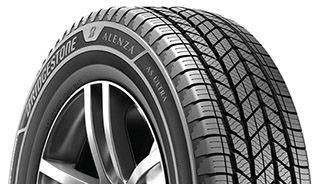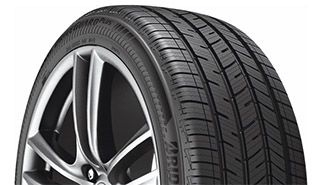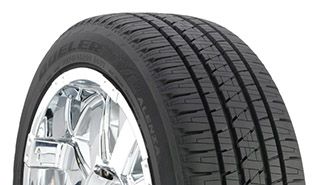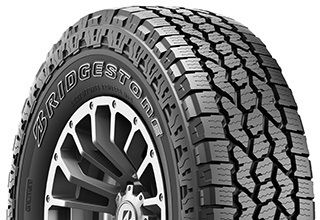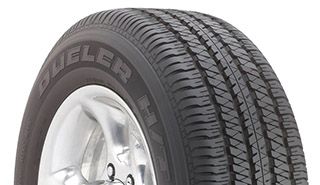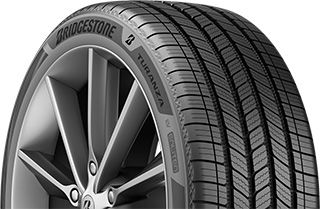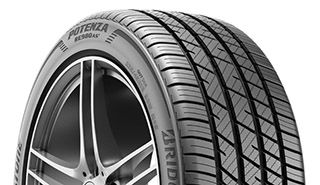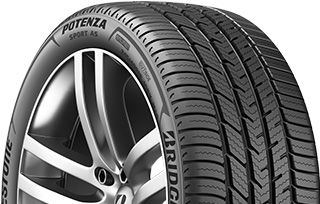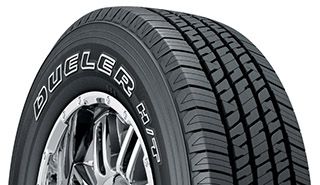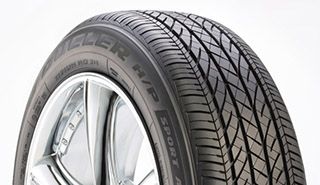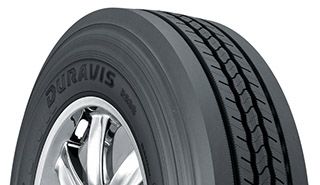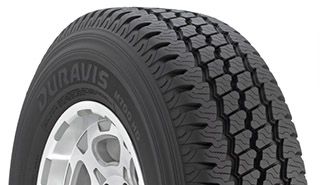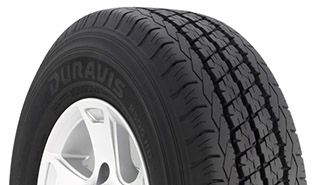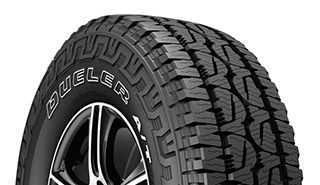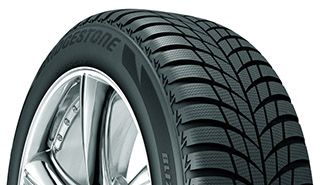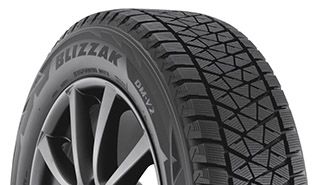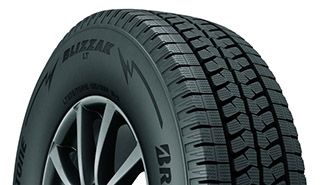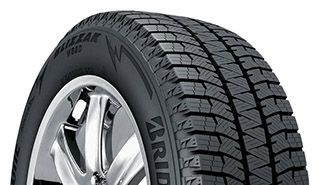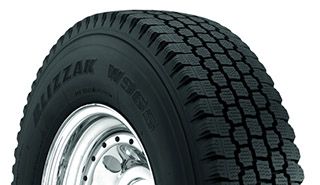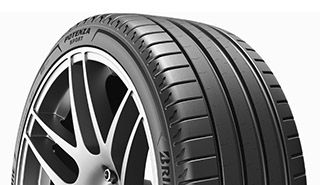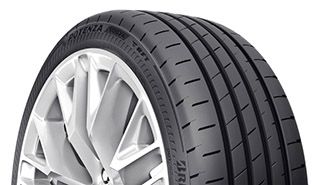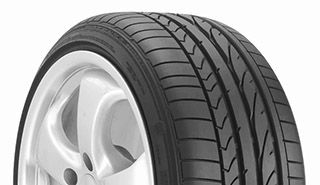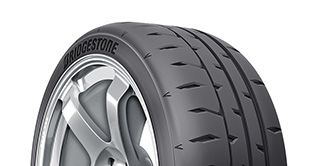WHAT IS TIRE ROLLING RESISTANCE?

CONTINUE YOUR JOURNEY
There’s never a good time for a flat. That’s why Bridgestone DriveGuard tires are masterfully engineered to keep you moving for up to 50 miles at speeds up to 50 MPH without disruption.
When you press down on the accelerator in your vehicle, you are essentially transferring energy—in the form of gas or electricity, depending on your automobile, through the engine and other systems in your vehicle. That results in your tires turning and enough momentum being built up to move your automobile. To accomplish this, though, your vehicle must overcome a lot of different factors that can make it resistant to forward movement. One of those factors is the tires’ rolling resistance.
Tire rolling resistance is the energy that your vehicle needs to send to your tires to maintain movement at a consistent speed over a surface. In other words, it is the effort required to keep a tire rolling. The main contributor to rolling resistance is the process known as hysteresis. Hysteresis is essentially the energy loss that occurs as a tire rolls through its footprint. The energy loss must be overcome by the vehicle’s engine, which results in wasted fuel.
CAN ROLLING RESISTANCE BE AVOIDED?
Rolling resistance is going to happen whenever a tire makes contact with a road surface. However, although it can’t be avoided, it can be minimized. Since tire rolling resistance is caused by hysteresis, tires can be engineered with specially formulated tread compounds that are more resistant to heat generation and constructed to minimize tire deflection for less energy loss. These are known as low rolling resistance tires.
ARE THERE BENEFITS TO LOW ROLLING RESISTANCE TIRES?
For drivers who are interested in optimizing their vehicle’s fuel efficiency, the answer is yes. Low rolling resistance tires can be much more fuel-efficient tire than conventional tires. The U.S. Department of Energy has done research that shows that utilizing low rolling resistance tires can have as much as a 10% fuel savings impact for drivers. However, for most drivers, the fuel savings is around 3%. Although that doesn’t sound like a lot, those numbers can add up over time and result in a substantial savings in fuel spending and waste.
ARE THERE COMPROMISES WITH LOW ROLLING RESISTANCE TIRES?
Like most things in life, you can’t get something without giving a little, and the same holds true for low rolling resistance tires, unless new technology is introduced. For example, a tire manufacturer can reduce tread depth to improve rolling resistance. However, there will be a corresponding reduction in tire wear life. To overcome this tradeoff, new technology could be designed to maintain the wear performance, while still improving rolling resistance.
WHAT TYPES OF LOW ROLLING RESISTANCE TIRES DOES BRIDGESTONE OFFER?
Here at Bridgestone, the tires with the best rolling resistance are in the Ecopia line. They’re also our most fuel-efficient tires. Our Ecopia line of tires is engineered to offer a balanced, all-season comfortable ride and a top-notch driving experience. Some of our Ecopia tires are even partially made from recycled rubber to improve their environmental friendliness.
Our entire line of Ecopia tires is designed to offer drivers an eco-friendlier all-season tire option that doesn’t compromise on performance or ride comfort.
Actual results may vary based on tire maintenance, vehicle, driving style and road conditions



